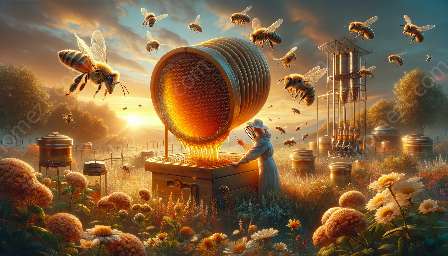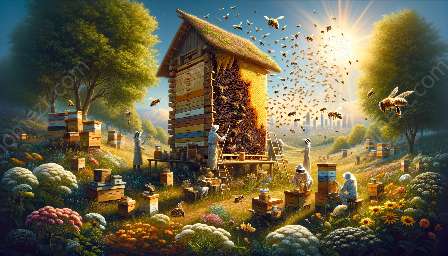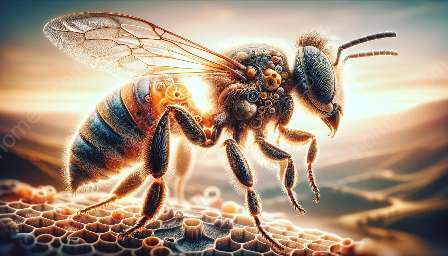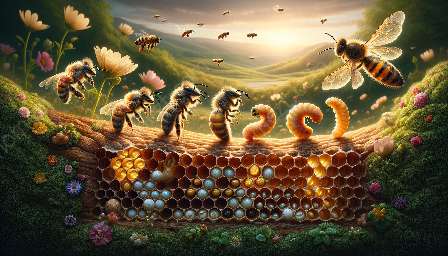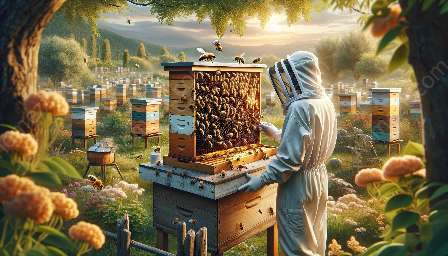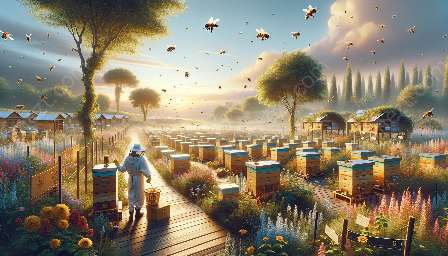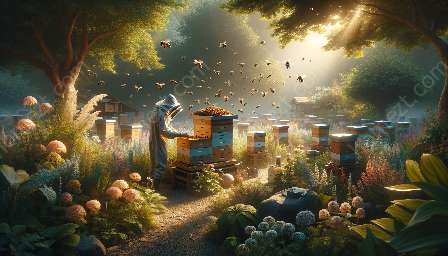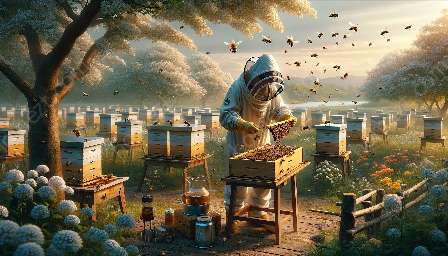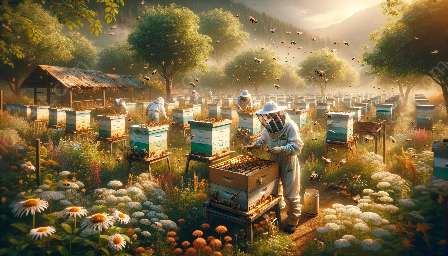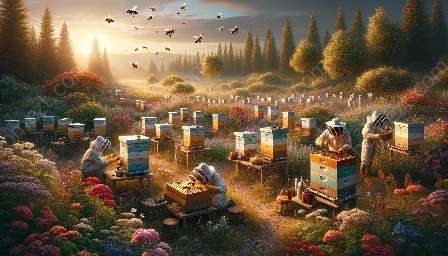Beehive construction is a captivating and essential aspect of beekeeping, offering a deeper understanding of the interdependence between human and bee habitats. In this comprehensive guide, we will delve into the art of building beehives, the compatibility with bees, and effective pest control measures.
The Importance of Beehive Construction
Building beehives is crucial for providing a suitable living space for honeybees. Properly constructed beehives offer bees protection from the elements and predators while allowing beekeepers to maintain and manage the colonies effectively. A well-constructed beehive provides a stable environment for the bees to thrive and produce honey, making it a fundamental component of beekeeping.
Understanding Bees
Before delving into beehive construction, it's important to understand the behavior and needs of bees. Bees are highly organized creatures that require a safe, warm, and dry environment to thrive. Additionally, they need ample space to store honey and raise their young. By understanding the intricate workings of a bee colony, beekeepers can tailor their beehive construction to meet the specific needs of the bees.
Beehive Construction Techniques
There are several types of beehives, each with its own construction techniques. The most common are the Langstroth, Top-Bar, and Warre hives. Each type has its unique advantages and construction methods, allowing beekeepers to choose the most suitable option based on their preferences and the needs of the bees. Beehive construction involves precision and attention to detail to ensure the structural integrity, insulation, and ventilation of the hive.
Langstroth Hives
The Langstroth hive, invented by Rev. Lorenzo Lorraine Langstroth, is the most widely used beehive design in the world. Its modular construction allows for easy management and inspection of the bee colony. The hive consists of boxes with removable frames, providing optimal space for bees to store honey and raise brood. Constructing a Langstroth hive requires precision in frame and box assembly to ensure ease of use and minimal disturbance to the bees.
Top-Bar Hives
Top-Bar hives are another popular choice for beekeepers, particularly those interested in natural and sustainable beekeeping methods. These hives feature horizontal bars on which the bees build their comb without using pre-formed foundation sheets. Constructing a top-bar hive involves creating a long, narrow box with bars across the top, allowing the bees to freely build their comb in a more natural manner, mimicking their behavior in the wild.
Warre Hives
Warre hives, inspired by the work of French beekeeper Abbé Émile Warré, are designed to mimic the bees' natural habitat while providing a simpler management approach for beekeepers. The construction of a Warre hive involves stacking boxes with bars, allowing the bees to build their comb vertically. The design promotes natural bee behavior and requires minimal intervention, making it an appealing option for beekeepers seeking a more hands-off approach to hive management.
Compatibility with Bees
Successful beehive construction goes beyond mere structural assembly; it involves creating a living space that meets the behavioral and physiological needs of bees. Factors such as ventilation, insulation, and access to food sources are crucial in ensuring the health and productivity of bee colonies. Moreover, the choice of hive design and materials should prioritize the well-being of the bees, enhancing their natural abilities to maintain a harmonious and thriving environment within the hive.
Pest Control Measures
One of the persistent challenges in beekeeping is pest control. Various pests, such as varroa mites, wax moths, and hive beetles, can threaten the well-being of bee colonies. Effective pest control measures should be integrated into beehive construction and maintenance. This includes employing screen bottom boards, using natural deterrents such as essential oils, and implementing regular inspections and interventions to mitigate pest infestations without harming the bees or compromising the integrity of the hive.
Conclusion
Mastering the art of beehive construction is a rewarding journey that not only enhances the practice of beekeeping but also deepens the understanding of bees and their intricate ecosystem. By prioritizing the compatibility with bees and incorporating effective pest control measures, beekeepers can create thriving colonies within well-crafted beehives, contributing to the sustainability of honeybee populations and the invaluable services they provide to the environment.


